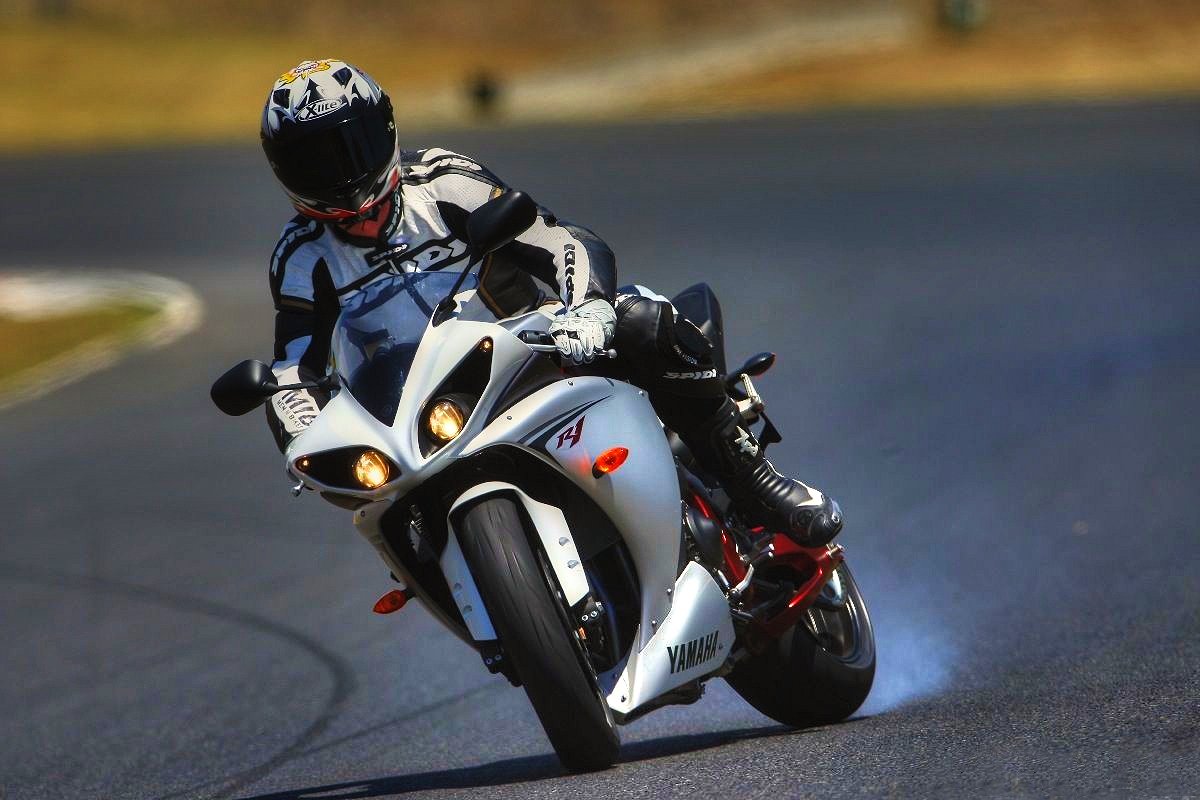
[ad_1]
On the flip of the century, traction management was virtually half a decade away from getting into MotoGP, not to mention inexpensive and accessible road-legal commuter bikes. By now, you may have an entire suite of digital aids, all with adjustable intervention ranges and all working on a regular basis, whatever the bike’s pitch or lean, and for lower than £10,000 in some instances. All of that’s attainable thanks to at least one field containing a bunch of sensors: the IMU.
For the reason that finish of the 2010s, the brand new expertise has been filtering down from the superbikes that debuted the programs lower than a decade earlier than to extra mainstream fashions. By 2019, Ducati’s whole vary featured cornering ABS, as an illustration – even the entry-level fashions – and inside a handful of years we’d anticipate each single bike on sale, proper right down to scooters, to be equally outfitted.
Why? As a result of this probably lifesaving expertise has change into comparatively low cost, compact and light-weight; it’s virtually more durable to justify not becoming it. And IMU – Inertial Measurement Items – are the important thing.
Whereas it’s comparatively simple to implement both traction management or antilock braking in a straight line – by evaluating the entrance and rear wheel speeds to identify a lock-up or wheelspin, as an illustration – doing the identical factor in corners is way, a lot more durable. As a motorcycle leans over and rolls on to the sting of its tyres, the efficient diameters of its entrance and rear wheels each change into smaller, and since they often have completely different widths and profiles, they don’t do it in unison. That, in flip, means they are going to rotate at completely different speeds, screwing up easy comparative formulation for making use of traction management or ABS.
No, to have the ability to apply the form of complicated traction management or ABS mapping wanted to deal with a motorcycle that’s travelling in something apart from a straight line, you want much more info. However give the pc information of its lean angle, pitch, acceleration, deceleration and lateral motion – together with the precise programming to interpret all of it – and the chances change into countless. Not simply lean-sensitive traction management and ABS, however applied sciences like wheelie management and rear-wheel raise management immediately change into comparatively straightforward to implement, together with all the degrees of rider-adaptable adjustment that we’re coming to anticipate.
The comparatively sudden emergence of all this expertise comes thanks to 2 key applied sciences. One is the adoption of computer-controlled digital throttles. Now virtually universally adopted as a response to Euro4 emissions guidelines, digital throttles imply you can provide the engine administration laptop positive management over not solely the bike’s fuelling and spark but additionally the airflow into the engine, permitting it to make the form of minute and fast changes wanted for profitable traction management.
Above is a Bosch MEMS IMU sensor with human hair laying throughout it
The second expertise is that of Microelectronic Mechanical Programs, or MEMS. These are what permit the creation of IMUs.
Though MEMS look very like laptop chips, and mount on circuit boards, these are literally tiny mechanical sensors – accelerometers and gyroscopes – which are the important thing to Inertial Measurement Items.
Accelerometers work utilizing weights suspended on springs, referred to as ‘seismic plenty’ – one for every course (left-right, forwards-backwards and up-down in a three-axis accelerometer). As a result of the burden is understood, as is the speed of the spring, by measuring how far that weight strikes away from its static place the sensor can inform how briskly the unit is accelerating in a specific course. This concept isn’t new, however MEMS has made it microscopically small, with comb-shaped seismic plenty mounted on silicone springs and sealed in a vacuum together with corresponding fixed-position comb tooth that interlace with these on the seismic mass. Because the distances between these items change, so does their electrical capacitance, so measuring that reveals any motion of the mass.
Gyroscopes measure angles of rotation, once more in as much as three axes; pitch (tilting forwards or backwards), roll (leaning aspect to aspect) and yaw (handing over relation to your preliminary course). Within the earliest of IMUs – just like the programs used on Apollo area craft – these gyroscopes had been the form of rotating weights that almost all of us affiliate with the phrase; actually not that completely different from a spinning prime.
A contemporary MEMS IMU has a ‘vibrating construction’ gyroscope fairly than these heavy, spinning ones. The concept is {that a} mass that’s vibrating backwards and forwards will attempt to maintain shifting in the identical course even when no matter it’s connected to strikes. Similar to the seismic plenty within the accelerometer, the motion of the gyroscope’s vibrating plenty is measured to disclose the corresponding motion of the bike.
All of this occurs in a tiny chip that would value as little as a couple of kilos. In truth, in mass manufacturing, the price may effectively be measured in pennies.
At most on a motorcycle, you’ll get six axes of motion that may be measured – acceleration in three instructions and rotation in one other three – though many will solely use 5 axes, doing with out the yaw measurement of the gyroscope. Nonetheless, you may really get MEMS IMU programs that measure 9 axes – including a three-axis magnetometer to the gyroscope and accelerometer sensors. It measures place relative to the earth’s magnetic discipline; helpful in some navigation gear, however probably not a assist on the subject of traction management or ABS.
The IMU on motorcycles, whether or not five-axis or six-axis, hand all their details about the bike’s acceleration and rotation to computer systems that use it for the ABS and traction management – and, in some instances, for digital suspension adjustment, too. Allied to different info – throttle place, wheel speeds, brake stress and possibly suspension potentiometer motion – the pc can construct up a whole image of what the bike is doing and examine its behaviour to pre-programmed maps. So if a measurement begins shifting outdoors a recognized protected zone, indicating the beginning of a lock up within the case of ABS or a slide on the subject of traction management, the pc will in all probability comprehend it lengthy earlier than you do. In truth, it could actually even begin to rein you in earlier than the issue begins – think about ‘rain’ settings, as an illustration – by placing decrease limits on the utmost ranges of acceleration it’ll permit.
It’s all extremely intelligent, and it’s expertise that merely didn’t exist a couple of years in the past (Bosch, the market chief within the discipline, launched its first ever MEMS elements in 1998). You could by no means want to make use of it, but when traction management or ABS solely must intervene as soon as in a motorcycle’s lifetime, it’ll immediately justify its existence.
[ad_2]
this Article is Supply FromSource link






